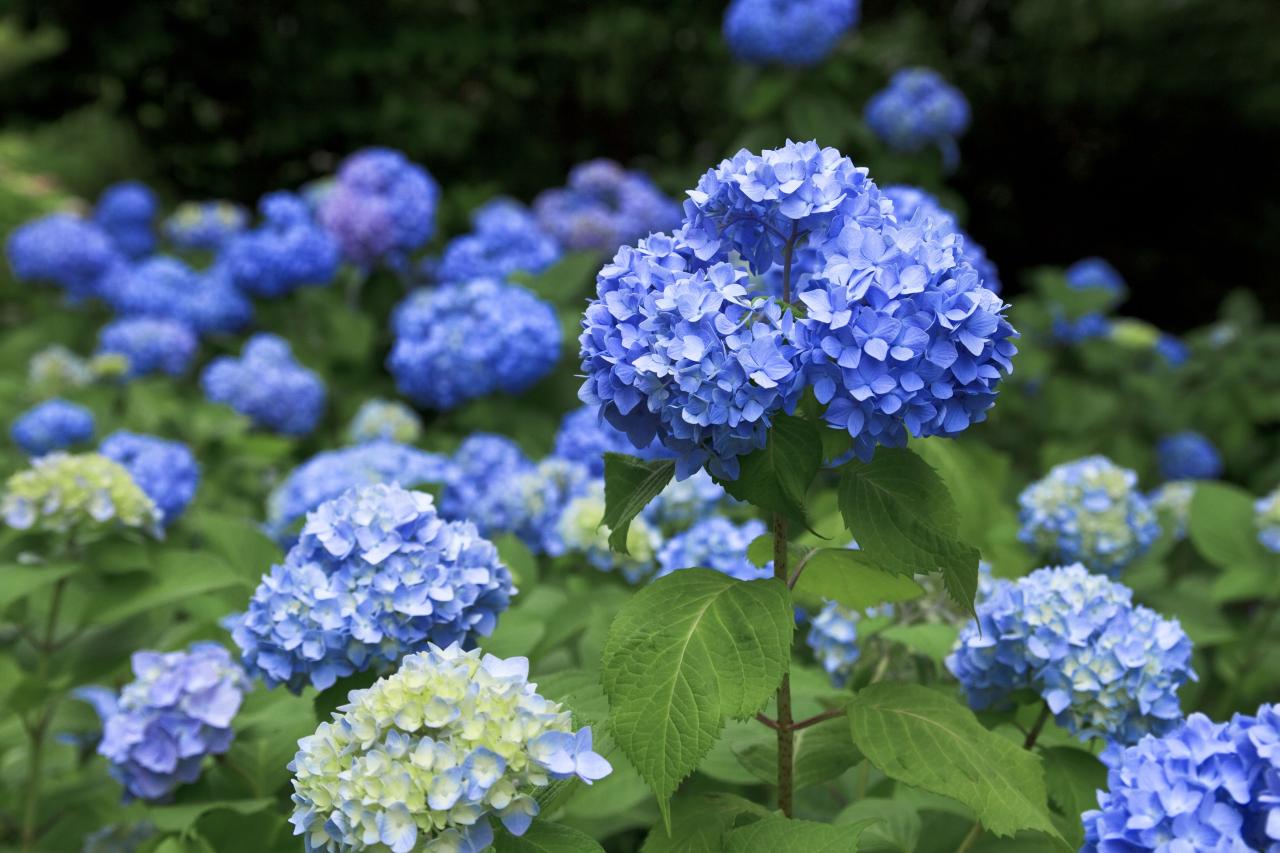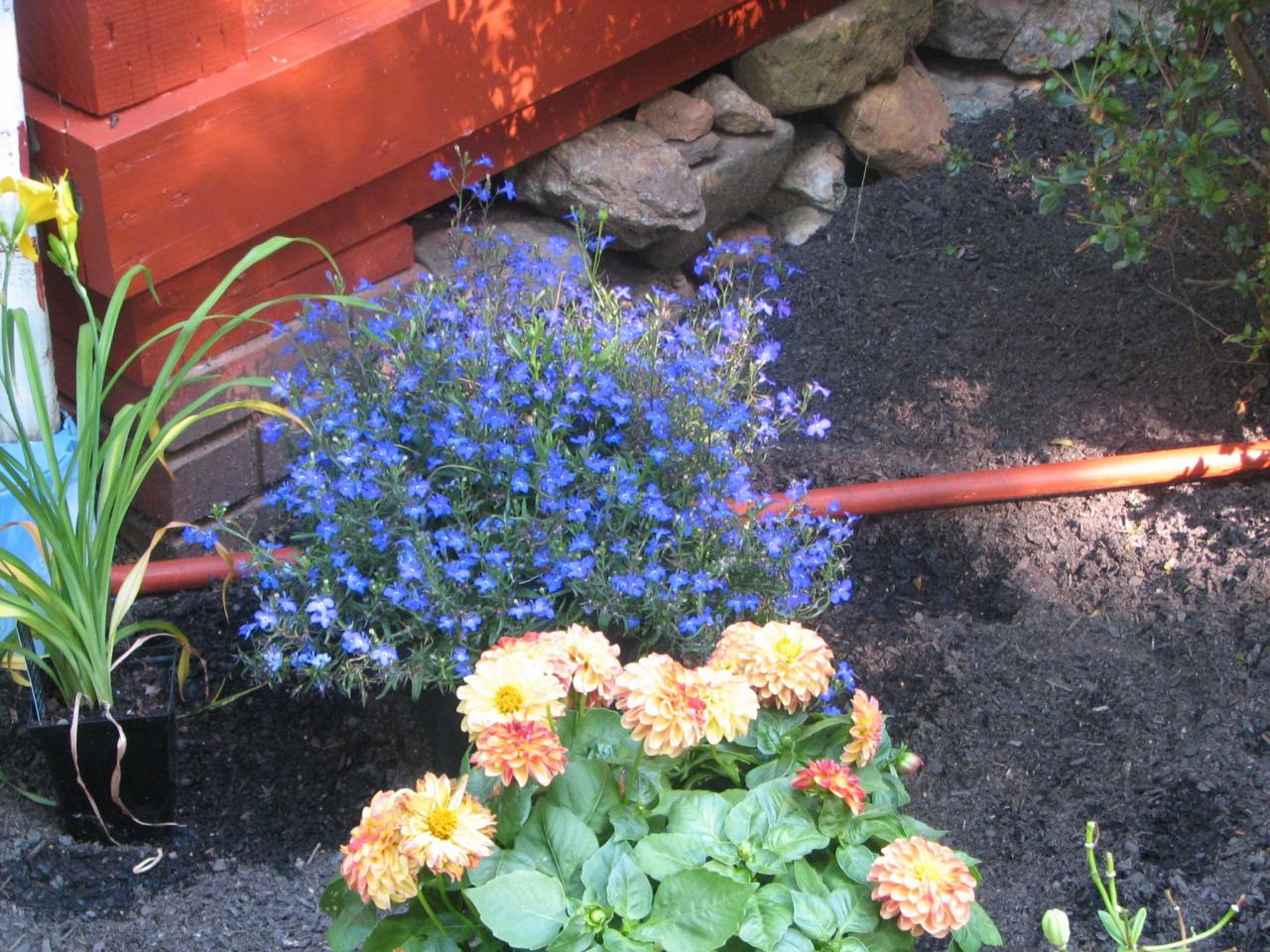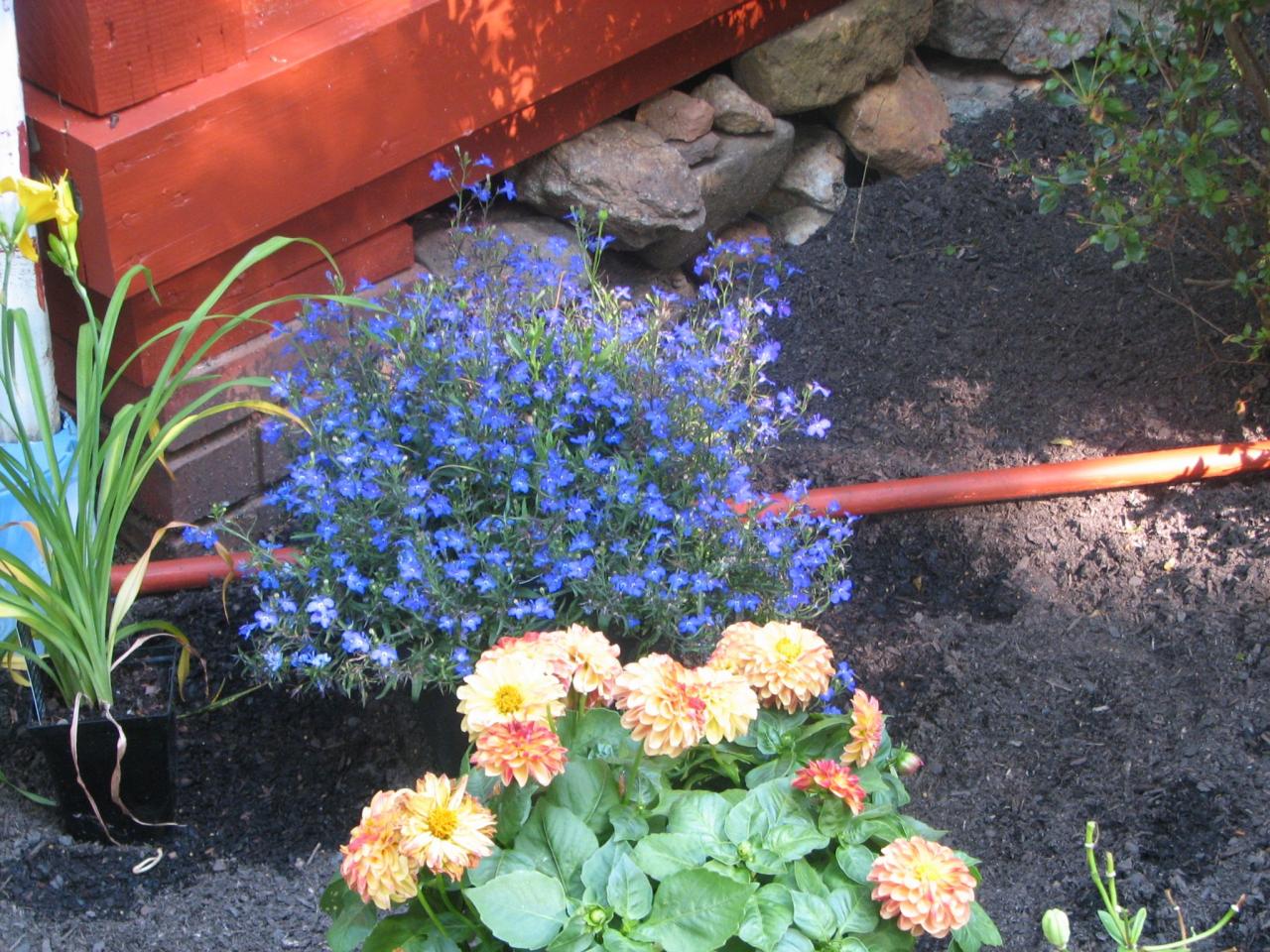The Top Blue Flowered Plants to Brighten Up Your Salads: Imagine a salad bursting with vibrant colors and tantalizing flavors, where the delicate petals of blue flowers dance amongst fresh greens and crisp vegetables. This culinary adventure is not just visually stunning but also offers a unique sensory experience, adding a touch of whimsy and elegance to your meal.
Blue flowers, with their captivating hues and subtle floral notes, are a delightful addition to any salad, transforming it into a masterpiece of taste and texture.
Beyond their aesthetic appeal, edible blue flowers bring a surprising range of flavors to the table. From the sweet and honeyed notes of borage to the peppery kick of violas, these blossoms offer a delightful contrast to the usual greens and vegetables.
Incorporating blue flowers into your salads not only elevates the visual presentation but also adds a layer of complexity and depth to the overall taste profile. So, let’s explore the world of blue-flowered plants and discover how to incorporate their beauty and flavor into your culinary creations.
Introduction
Incorporating edible flowers into salads isn’t just a trend; it’s a delicious way to elevate your culinary creations and experience a symphony of flavors and textures. These delicate blooms add a burst of vibrant color and unique, often subtle, flavors that can transform a simple salad into a masterpiece.
While many edible flowers offer a spectrum of colors, blue-flowered plants stand out as particularly captivating. Their cool, ethereal hue creates a visual contrast that draws the eye and invites you to savor the unexpected.
The Allure of Blue Flowers in Salads
Blue-flowered plants possess a unique charm that adds a touch of elegance and sophistication to any salad. Their color evokes a sense of tranquility and serenity, making them a perfect addition to dishes that aim to inspire a sense of peace and well-being.
In the culinary world, blue is often associated with freshness, purity, and a touch of the exotic. This association adds a layer of intrigue and allure to dishes featuring blue-flowered plants, making them stand out from the ordinary.
“The blue flower is a symbol of hope and possibility. It reminds us that even in the darkest of times, there is always beauty to be found.”
Unknown
Top Blue-Flowered Plants to Brighten Up Your Salads
Adding edible flowers to your salads can be a fun way to add a pop of color, unique textures, and interesting flavors. Blue flowers, in particular, can create a stunning visual appeal and provide a refreshing contrast to the usual greens.
Here are some of the top blue-flowered plants that can be safely incorporated into your salads.
Blue-Flowered Plants for Salads
These plants are not only beautiful but also offer a range of culinary uses. They can be used to add a touch of color and flavor to salads, as well as to create stunning garnishes for other dishes.
Plant Name |
Description |
Flavor Profile |
Culinary Uses |
|---|---|---|---|
Borage (Borago officinalis) |
Borage is an annual herb with star-shaped blue flowers and hairy leaves. It has a mild cucumber-like flavor. |
Cucumber-like, slightly sweet |
Borage flowers can be added to salads, cocktails, and even desserts. The leaves can be used in soups and stews. |
Chicory (Cichorium intybus) |
Chicory is a perennial herb with bright blue flowers. It has a slightly bitter and earthy flavor. |
Bitter, earthy, slightly sweet |
Chicory flowers can be used in salads, soups, and stews. The roots can be roasted and used as a coffee substitute. |
Clary Sage (Salvia sclarea) |
Clary sage is an annual herb with large, showy blue flowers. It has a slightly sweet and floral flavor. |
Sweet, floral, slightly minty |
Clary sage flowers can be used in salads, desserts, and as a garnish. The leaves can be used in teas and infusions. |
Cornflower (Centaurea cyanus) |
Cornflowers are annual herbs with vibrant blue flowers. They have a slightly sweet and slightly bitter flavor. |
Sweet, slightly bitter, slightly peppery |
Cornflower petals can be used in salads, soups, and as a garnish. They can also be used to make teas and infusions. |
Growing Blue-Flowered Plants

Cultivating blue-flowered plants in your garden is a rewarding endeavor, offering a vibrant splash of color to your salads and a unique visual appeal. By understanding their specific growing requirements, you can ensure their healthy development and maximize their potential.
Sunlight Requirements
Blue-flowered plants have varying sunlight needs, and understanding these preferences is crucial for their successful growth. Some thrive in full sun, requiring at least six hours of direct sunlight daily. Others prefer partial shade, where they receive dappled sunlight for a portion of the day.
For instance, cornflowers, with their striking blue blossoms, flourish in full sun, while borage, with its delicate blue flowers, prefers partial shade.
Soil Type
The type of soil is another essential factor influencing the growth of blue-flowered plants. Most prefer well-drained soil that allows for adequate aeration and prevents waterlogging. However, certain species, such as chicory, tolerate heavier soils with higher clay content. It is crucial to consider the specific soil requirements of each plant before planting.
Watering Needs
Blue-flowered plants have varying watering needs, depending on their specific species and the prevailing weather conditions. Some, like borage, require consistent moisture, while others, such as cornflowers, are more drought-tolerant. Regular watering, particularly during dry periods, is crucial for maintaining optimal soil moisture levels and promoting healthy growth.
Propagation Methods
There are two primary methods for propagating blue-flowered plants: sowing seeds and taking cuttings.
- Sowing seeds: Many blue-flowered plants can be easily propagated by sowing seeds directly into the garden bed. It is important to choose a suitable time for sowing, considering the plant’s specific requirements. For example, cornflower seeds can be sown directly in the garden in early spring, while borage seeds can be sown in late spring or early summer.
- Taking cuttings: Certain blue-flowered plants, such as chicory, can be propagated by taking cuttings. This involves removing a section of stem from the plant and planting it in a suitable medium. The cuttings should be taken from healthy, non-flowering stems and placed in a well-drained potting mix.
Regular watering and adequate humidity are essential for successful rooting.
Pest and Disease Control
Like any plant, blue-flowered plants can be susceptible to pests and diseases. Regular monitoring for signs of infestation or disease is crucial for early detection and intervention.
- Pests: Common pests that may affect blue-flowered plants include aphids, whiteflies, and slugs. These pests can be controlled using a variety of methods, such as hand-picking, insecticidal soap, or introducing beneficial insects, such as ladybugs, that prey on these pests.
- Diseases: Blue-flowered plants can also be susceptible to diseases, such as powdery mildew, rust, and leaf spot. Good sanitation practices, such as removing infected leaves and avoiding overcrowding, can help prevent the spread of diseases. In severe cases, fungicides may be necessary to control the infection.
Adding blue flowers to your salads can create a stunning visual appeal and introduce a unique flavor dimension. While some blue-flowered plants, like borage, are easy to grow, others require a bit more attention. If you’re looking for a vibrant blue addition to your garden, consider growing the striking Rodgers plant.
To ensure your Rodgers plants thrive, consult Rodgers Plant Care Tips: How to Achieve Stunning Growth for expert advice on optimal growing conditions and maintenance. Once your Rodgers plants are flourishing, you can harvest their beautiful blue flowers to elevate your salads to new heights.
Incorporating Blue Flowers into Salads
Adding edible blue flowers to salads can create a visually stunning and flavorful experience. These vibrant blooms not only enhance the aesthetics of your dishes but also introduce unique flavors and textures. To ensure the best results, it’s essential to harvest and prepare the flowers correctly.
While blue flowers are often associated with gardens, they can also add a vibrant touch to your salads. Consider incorporating the delicate blooms of columbine, a favorite for its whimsical appearance. For tips on cultivating these captivating plants, check out our guide on Columbine Plants Care Tips for Every Season.
Once your columbine thrives, you can even use its edible flowers to add a unique visual and textural element to your next salad.
Harvesting and Preparing Edible Flowers
To ensure peak freshness, harvest edible flowers in the morning after the dew has evaporated. This helps to prevent wilting and preserves their delicate flavors.
- Choose flowers that are fully open and free of blemishes or insects.
- Gently snip the flower heads with sharp scissors or a knife.
- Avoid using flowers that have been sprayed with pesticides or herbicides.
Once you have harvested the flowers, rinse them gently in cold water to remove any dirt or debris. You can gently pat them dry with a clean towel or let them air dry.
Incorporating Blue Flowers into Salads
There are many creative ways to incorporate blue flowers into salads. Here are some tips for using blue flowers in salads:
- Use blue flowers as a garnish:Sprinkle a few blue flower petals over a finished salad for a touch of color and visual appeal.
- Combine blue flowers with complementary colors:Pair blue flowers with other vibrant colors, such as yellow, orange, or red, to create a visually striking contrast.
- Consider flavor pairings:Choose flowers with flavors that complement the other ingredients in your salad. For example, lavender flowers can be paired with berries and citrus fruits, while cornflower petals can be used with savory dishes.
Salad Combinations with Blue Flowers
Here is a table showcasing some creative salad combinations using blue flowers, highlighting the color contrast and flavor profiles:
Salad Name |
Ingredients |
Blue Flower |
Flavor Profile |
Color Contrast |
|---|---|---|---|---|
Citrus and Lavender Salad |
Arugula, oranges, grapefruit, goat cheese, toasted almonds |
Lavender flowers |
Floral, citrusy, slightly sweet |
Purple and orange |
Summer Corn and Cornflower Salad |
Grilled corn, cherry tomatoes, red onion, cilantro, lime juice |
Cornflower petals |
Earthy, sweet, tangy |
Blue and yellow |
Balsamic Beet and Chicory Salad |
Roasted beets, chicory, walnuts, balsamic vinaigrette |
Blue borage flowers |
Sweet, earthy, tangy |
Blue and red |
Culinary Inspiration

Blue-flowered plants add a touch of vibrancy and intrigue to your culinary creations. Their delicate blossoms not only enhance the visual appeal of dishes but also bring a unique flavor profile that complements various culinary styles.
Recipes Featuring Blue-Flowered Plants
These vibrant blossoms lend themselves beautifully to salads, offering a range of textures and flavors. Here are a few recipe ideas:
- Borage and Strawberry Salad:Combine fresh borage flowers with ripe strawberries, crumbled feta cheese, and a light vinaigrette. The borage’s cucumber-like flavor complements the sweetness of the strawberries, while the feta adds a salty tang.
- Chicory and Blue Cheese Salad:Toss chicory leaves with crumbled blue cheese, toasted walnuts, and a drizzle of honey mustard dressing. The chicory’s slightly bitter notes play well against the creamy blue cheese and the sweetness of the honey mustard.
- Lavender and Peach Salad:Combine sliced peaches with fresh lavender flowers, goat cheese, and a balsamic vinaigrette. The lavender’s floral aroma adds a subtle sweetness that complements the peaches and the tang of the goat cheese.
Creative Salad Dressings
Blue flowers can also be incorporated into salad dressings to create unique flavor profiles. Here are some ideas:
- Borage Vinaigrette:Infuse olive oil with fresh borage flowers for a delicate cucumber-like flavor. Combine this infused oil with white wine vinegar, Dijon mustard, and salt and pepper to create a refreshing vinaigrette.
- Lavender Honey Dressing:Combine honey with a splash of white wine vinegar, Dijon mustard, and a few drops of lavender extract. This dressing adds a subtle floral sweetness to salads.
- Chicory Herb Dressing:Combine fresh chicory leaves with herbs like parsley, dill, and chives, and blend them with olive oil, lemon juice, and a pinch of salt and pepper. This dressing provides a vibrant and slightly bitter flavor profile.
Nutritional Benefits of Edible Flowers
Incorporating edible flowers into salads provides numerous nutritional benefits:
- Rich in Antioxidants:Many edible flowers are rich in antioxidants, which help protect cells from damage caused by free radicals.
- Source of Vitamins and Minerals:Edible flowers can be a good source of vitamins and minerals, including vitamin C, vitamin A, and iron.
- Low in Calories:Most edible flowers are low in calories, making them a healthy addition to salads.
Incorporating Blue Flowers into Other Culinary Creations, The Top Blue Flowered Plants to Brighten Up Your Salads
Beyond salads, blue flowers can enhance other culinary creations:
- Desserts:Incorporate blue flowers into desserts like cakes, cookies, and ice cream for a unique visual appeal and subtle floral flavor.
- Drinks:Infuse blue flowers into cocktails, mocktails, or teas for a refreshing and aromatic twist.
- Garnishes:Use blue flowers as garnishes for appetizers, main courses, and desserts to add a touch of elegance and vibrancy.
Last Point
As you delve into the world of blue-flowered plants, you’ll discover a universe of culinary possibilities. Whether you’re a seasoned gardener or a novice cook, the beauty and versatility of these blossoms will inspire you to experiment with new flavors and textures.
So, step outside the ordinary, embrace the extraordinary, and let the vibrant hues and captivating tastes of blue-flowered plants transform your salads into edible works of art. Your taste buds and your guests will thank you for it.
Key Questions Answered: The Top Blue Flowered Plants To Brighten Up Your Salads
Are blue flowers safe to eat?
Yes, many blue flowers are safe to eat, but it’s essential to research and identify the specific variety before consumption. Some blue flowers, like those from the nightshade family, can be toxic.
Where can I buy blue flower seeds or plants?
You can find blue flower seeds and plants at local nurseries, garden centers, and online retailers specializing in edible flowers.
What are the best blue flowers for beginners?
Borage, violas, and cornflowers are known for their easy-to-grow nature and beautiful blue flowers. They are excellent choices for beginners.
Can I grow blue flowers in containers?
Yes, many blue flowers can thrive in containers, making them ideal for balconies, patios, or small gardens.
